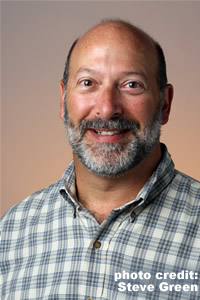Dating the Big Bang
David A. Weintraub explains the age of the universe—and the ways scientists have confirmed it
Some scientific questions about the universe remain a matter of theory and conjecture. (What existed before the big bang? What is dark matter? How will the universe end?) Other mysteries of the cosmos, though, are settled, proven beyond a doubt in multiple ways. (What is the distance from Earth to the moon? To the sun? To the nearest star? What is the speed of light? Do planets orbit other stars?) One question that belongs firmly in the settled category, according to David A. Weintraub, a professor of astronomy at Vanderbilt, is the title of his latest book: How Old is the Universe? The answer, 13.7 billion years old, need hardly fill a book, but the story of how scientists found and confirmed the age of the universe is the story of astronomy itself, some 2,500 years in the making. Sharing much more than the path that led to a number, Weintraub gives a very readable history of astronomy, explaining how each milestone discovery—starting with those of the ancient Greeks—placed mankind closer to fixing the moment it all began.
Of course, Weintraub notes, people have “identified” that moment before, with considerable error. In 1654, James Ussher, the Archbishop of Armagh in Ireland, became “the best known, most scorned and least accurately quoted” of a succession of scholars who combined biblical chronologies with classical accounts of historic events to deduce the age of “Heaven and Earth.” In his thousand-page treatise, Ussher came up with sunset on the evening of Saturday, October 22, 4004 BCE. The Reverend John Lightfoot, an influential nineteenth-century author, modified Ussher’s calculation to place the creation of man at nine in the morning after the autumnal equinox of 3929 BCE.
 But even as religious scholars were adding numbers from the Old Testament, astronomers were discovering facts about both the solar system and the stars beyond that would reveal the life cycles of celestial bodies—cycles that point to an inexorable beginning. By the twentieth and early twenty-first centuries, these discoveries would be tested by a series of space-based instruments that irrefutably fix the age of everything at 13.7 billion years.
But even as religious scholars were adding numbers from the Old Testament, astronomers were discovering facts about both the solar system and the stars beyond that would reveal the life cycles of celestial bodies—cycles that point to an inexorable beginning. By the twentieth and early twenty-first centuries, these discoveries would be tested by a series of space-based instruments that irrefutably fix the age of everything at 13.7 billion years.
How Old is the Universe? walks general readers gently through each step of discovery, with Professor Weintraub—whose previous, equally inquisitive book was Is Pluto a Planet?—proving an able guide. When he explains parallax measurement, for example, he instructs the reader, “Hold your arm straight in front of you with your index finger pointed up. Close your right eye and look at your finger with your left eye, making a mental note of the position of more distant objects that appear nearly directly behind your index finger.” After telling readers to repeat the process with the other eye, he explains the steps of using these two views to measure the distance to their finger, then takes us through the way ancient Greeks used the principle to accurately measure the distance to the sun and the moon—and later astronomers used to measure the distance to the stars. With simple, straightforward descriptions, Weintraub gives readers the equivalent of an enjoyable college astronomy course, as well as teaching the half-dozen or so ways by which we know, with great precision if not the exact time of day, the moment of the big bang.
David A. Weintraub will discuss How Old is the Universe? at the Vanderbilt Dyer Observatory on March 8 at 7:30 p.m. Tickets are $5 each or $10 per family. The event is open to ages twelve and up.


